Lithuania
On August 7, we docked in the port town of Klaipeda (pronounced klay ·puh · duh) one of three large cities in the country of Lithuania.
I was really surprised by this country. It looks like any town, USA, and they are super well educated. While Lithuanian is their official language, their English is spot on. Very few of the people that we met even had an accent. And most people speak several other languages as well.
The official language of Klaipėda is Lithuanian, but many residents also speak English, German, and Russian.
Their first King was crowned in the 13th century. It was the largest country in Europe in 14th century, stretching from Baltic to Black Sea. After hundreds of years of battling to keep their lands, they joined forces with Poland as a single country in the 17th century, only to be then conquered by Russia in the 18th century.
They gained their independence just before World War II, but was reconquered by Russia, and did not gain independence again on 1990. Now, they absolutely hate Russia.
And although they are part of NATO, they feel strongly that depending on how things go in Ukraine, they may become Russia’s next target. I feel bad for them, having to live with this over their head.
Being less than 500 miles from Ukraine, they are feeling very vulnerable these days. A huge numbers of citizens that have left the country to fight against Russia in Ukraine.
They also share a border with Belarus, who they also have very negative feeling about as well.
All the way up until the 1980s, Russia ruled them and forbid them to practice the religions of their choice. One of the things that they did to rebel was to constantly place crossed at intersections at highways throughout the country. It drove the Russians crazy.
With all of this cross-making expertise under their belts, they became experts, and have won awards in Europe for their artistic capabilities. Although it was in a different part of the country than we visited, there was a lot of talk about this hill where they display all of their crosses. It is super cool. Check out the Hill of Crosses pictures here.
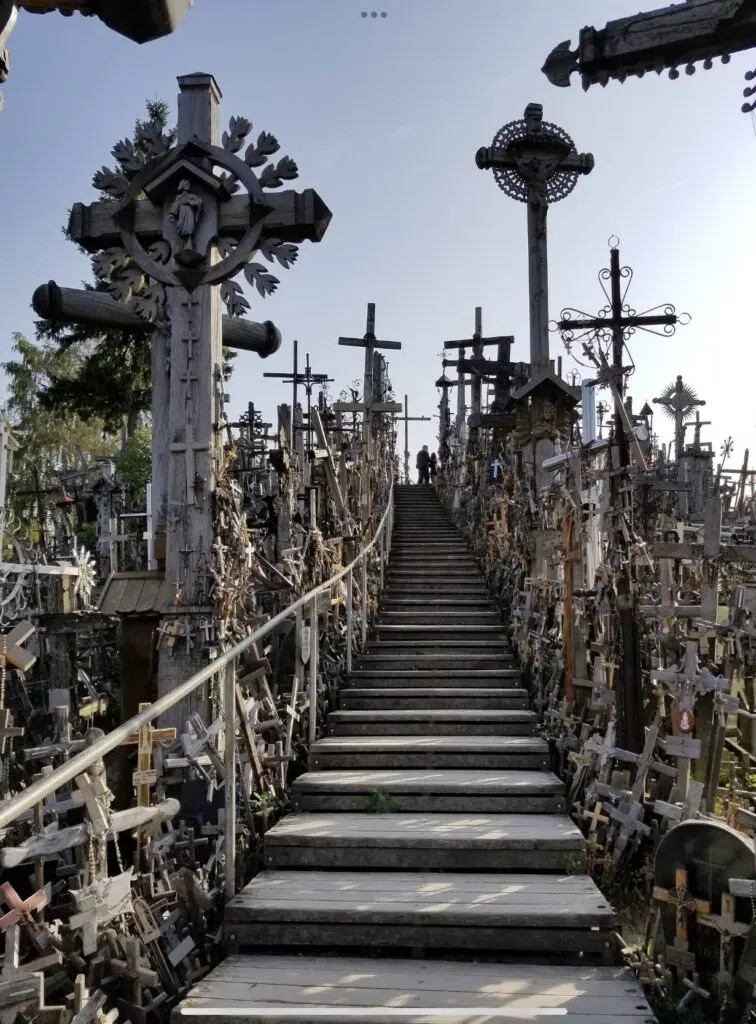
The country has a huge white stork population, and they migrate to the county each year. The locals swear they always arrive and depart on the exact same dates each year. (Google confirms that they leave on August 20th, but does not mention their traditional arrival date.)
Anyway, they are everywhere, and they’re pretty cool. Many homeowners place a poll in there back 40, and lay a few large stick flat across the top to urge them to build nests. It’s a thing here…
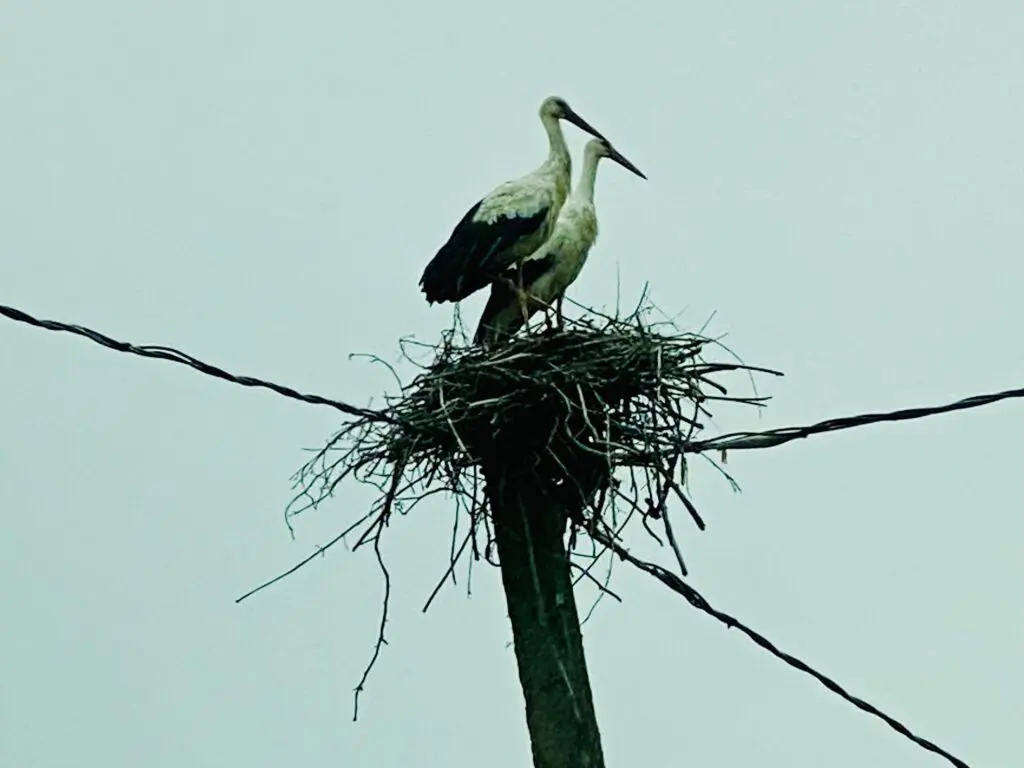
The county is the size of West Virginia, 21,500 square miles, and the population is 2.8 million. Amazingly, they have a 99.98% literacy rate. Houses cost about $150,000, and apartment start in the $50s, but the average salary is only $1,500/month!
Lithuania is known for their beer, and some have even won several international awards recently. However, there true claim to fame is, Lithuania is the world’s leading manufacturer of industrial lasers.
Zemaitija National Park
My excursion for the day took me out of the city, through the countryside, and deep into a forest an hour-and-half away. Destination, the Soviet Nuclear Weapons Site located in Zemaitija National Park,
Ironically, as we approached the abandon nuclear facility, a fog settled in. As we bounced our way down a crumbling narrow road, through the mist, past several dilapidated farm houses, I recalled reading several old books about, well, pretty much exactly this. Eek!
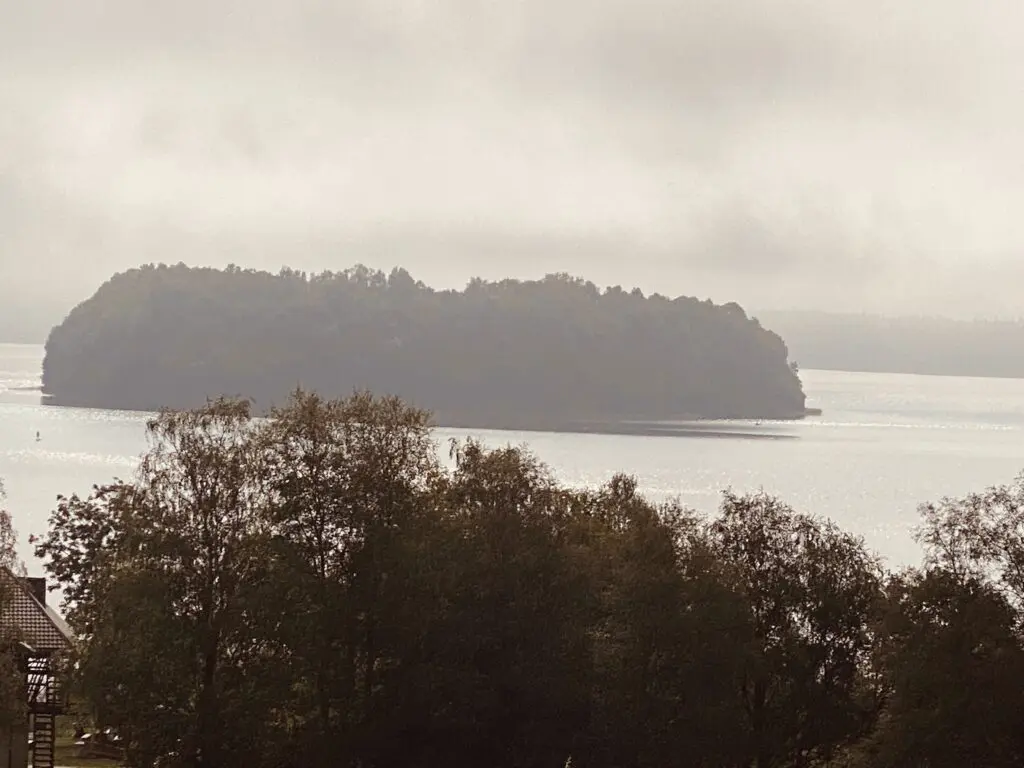
To calm my nerves, I repeated to myself, over and over again, “It’s only an abandoned nuclear facility. It’s only an abandoned nuclear facility.”
Regretting my choice to get a seat towards the front of the mostly empty bus, I realized that if the zombies come, they will have to go through me to get to all of the yummy easy to catch old folks in the back of the bus. Luckily, I have been around Wikings for the last several days, so it should be okay if things go south.
The nuclear site is located lakeside, deep in the forest. The Russians paid and eventually forced the several the farmers that lived in the area to move away. Then they proceeded with a 15 year effort to build the site in secret.
The site is built near a lake. A water source was needed to support the nuclear facility, but because of the size of the rockets stored here, the water would dampened the acoustics should a rocket ever be launched. (Apparently, if not for the waterfront location, the acoustics would have caused anyone in a several mile radius to go deaf.)
There was a story about the generator. When the Russians began building the facility (in secret) in the 1950s, they used all Etonian laborers that they brought in. Presumably, if these workers went into town and drank too much, they would not be able to tell of the facility’s existence, because they could not speak the local language.
So at some point during the construction, a train car derailed, leaving a massive object covered in tarps lying in the ditch. The soldiers made the local farmers all come down with their tractors and help move the mysterious cargo back on to a train car. The farmers never knew what it was until 45-some years later, when all of the locals went into the forest to see the abandoned site. The old-timers all said, “Ah, yes. This generator must be the massive, tarpped object they forced us to move when I was a boy!”.
So this site was the first launch site Russia ever built. Construction began in 1945, and it opened in the 1962. Using early satellite technology, “NATO” discovered its existence in the early 1965, but did not divulge it until the 70s.
Initially, the missiles had a 1,200 mile range, and the four site’s 4 missiles were trained on Norway, Spain, England, and Germany.
The reason for building such a facility is simple. Mobile middles take a minimum of 45 minutes to launch, where the site could launch in 22 minutes.
In 1968, Russia was in a skirmish with Czechoslovakia, and had 500 tanks and 500,000 troops on the ground there. Records found at the site later indicated that Russia retargeted their missiles, fueled them, rolled the roofs out of the way, and made final preparations to launch them on the country (in spike of the fact that they would kill their own troops and tanks). At the last minute, Moscow changed its mind, and cancelled launch. Whew!
So are guide was awesome. He was with us the whole day, and was very intertwining, using different accents depending on the narrative.
When we arrived at the missile site, de put on a Russian General hat and coat, and did the entire tour using a Russian accent, calling us “capitalists” along the way. “You capitalist come over this way, so I can show you…” It was seriously entertaining. Loved this guy!
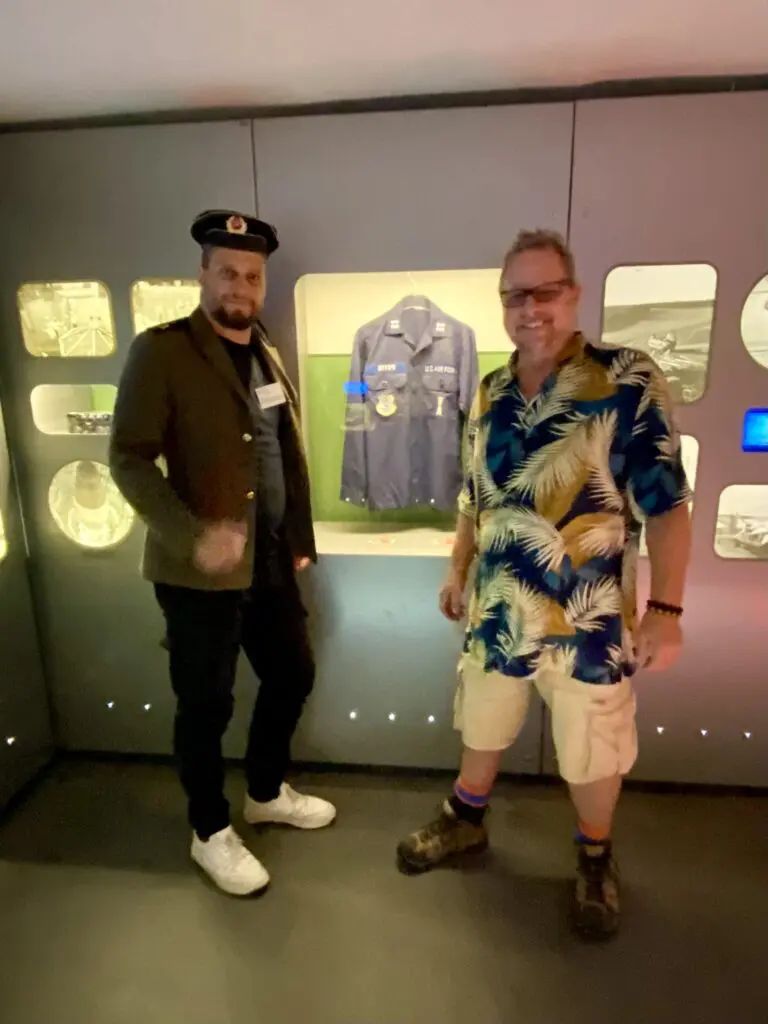
So while the site was operational, it had various levels of security in place. All of the usual stuff (barbed wire, tanks out in front, etc.) but at night, they had some sort of underground electric fence
just below the surface, and extending throughout all of the grassy areas in front of the site and around the silos. (I have no idea how this worked, but that was what they were said to have had.
Also of interest, the missiles sat at ready in the underground tubes without the nuclear warhead mounted on them. Part of the launch process was to roll away the launch tube’s roof, lower the warhead onto the missile with a crane, and attach it. (The giant cement launch tubes had doors at the top. The workers would go through tunnel, and out the doors in order to perform this work.)
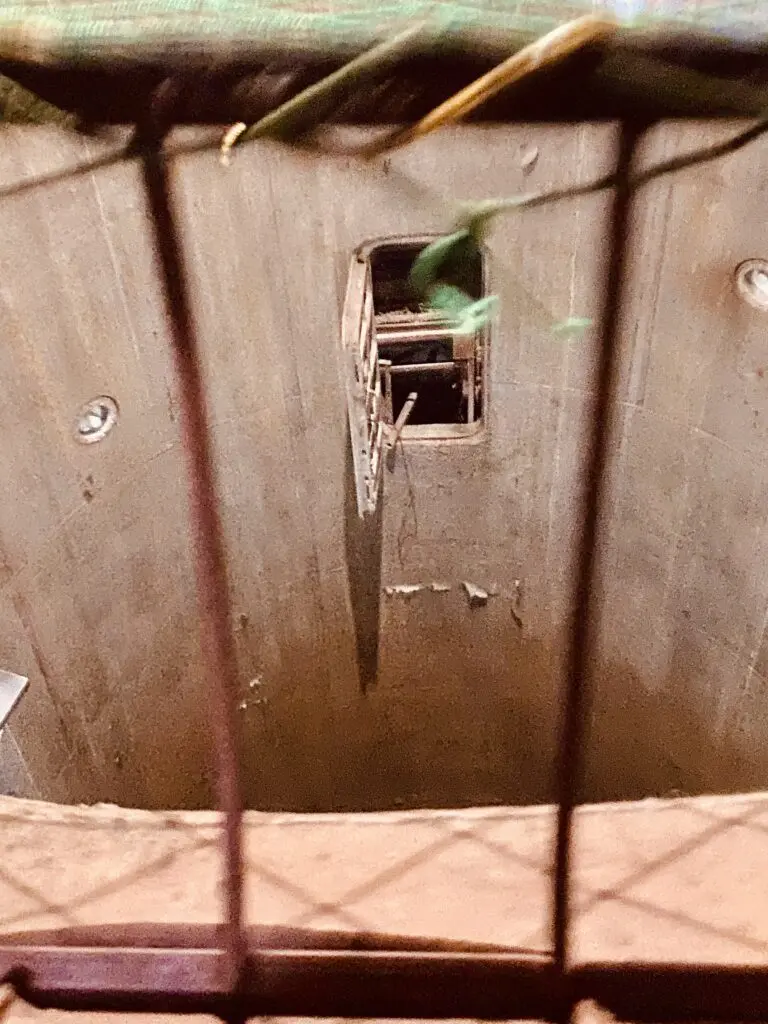
The misspelled themselves were the old self-guided type, so part of the targeting procedure was to program a gyroscope, and mounting it inside the missile. (i.e. Once launched, they could not be controlled.)
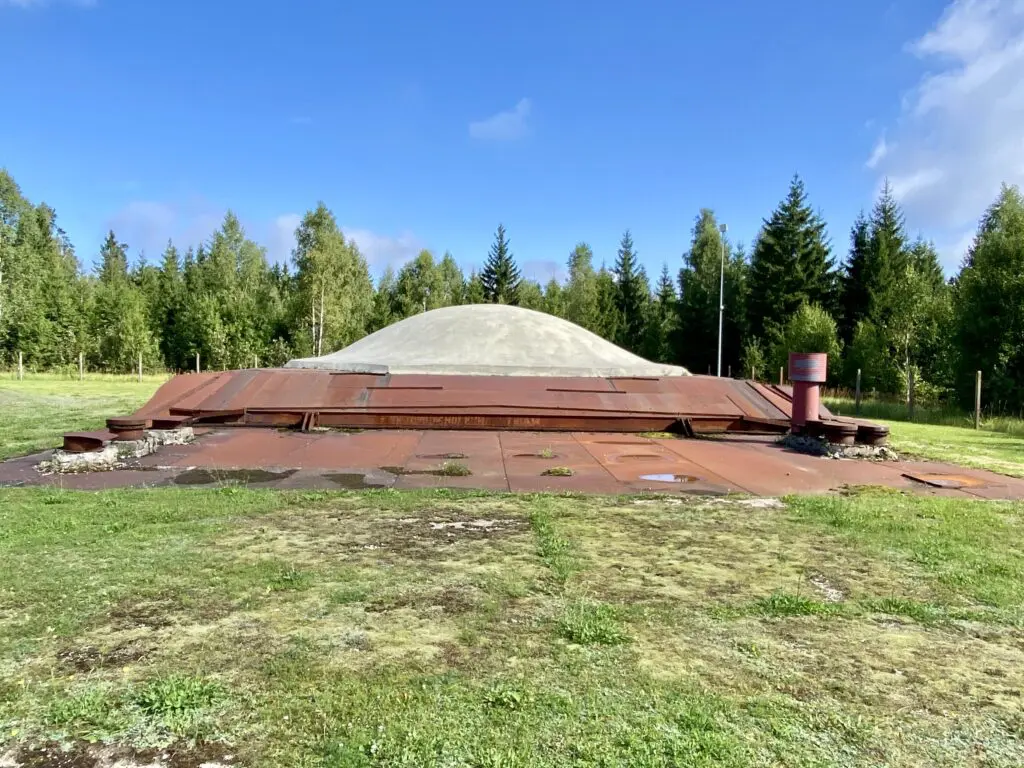
This (and fueling the rockets) could have all taken place in 22 minutes.
Like their American counterparts, they also used a two launch keys, located on opposite sides of the command room. They had to be turn in simultaneously, which would have launched the missiles.
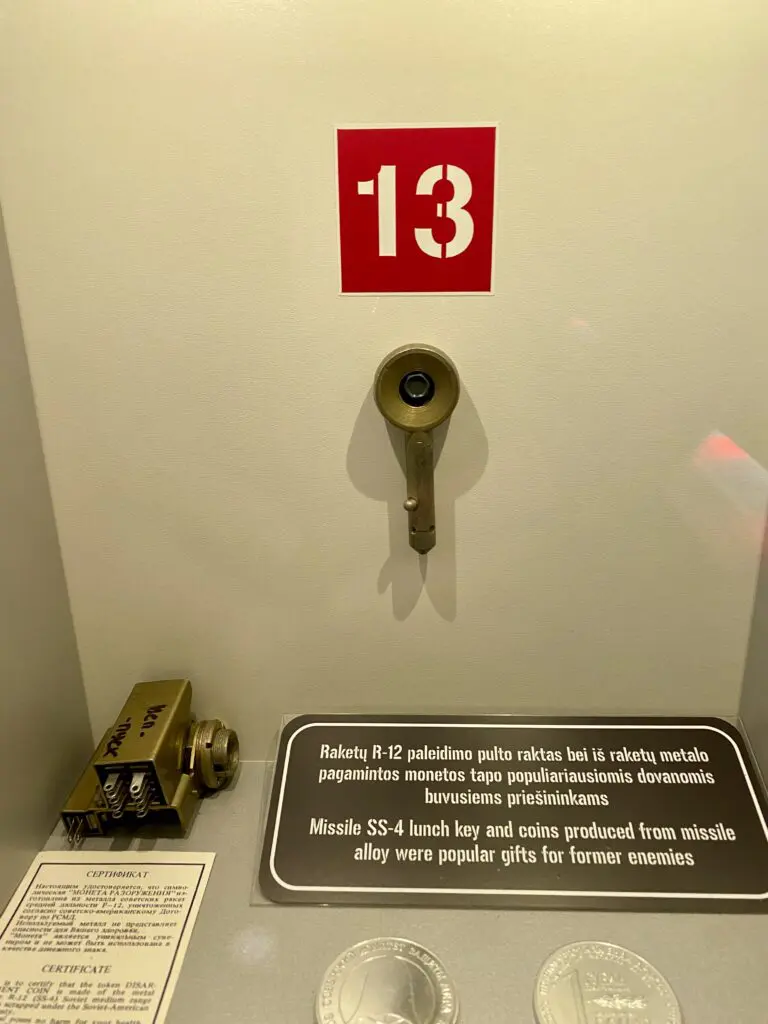
The cement hallways, tunnels and staircases in underground facility were never-ending. Most were just dimmly lit cement and rusty steel. The doors were big metal hatches like on a submarine
However the areas near the launch room and command centers were white and green tiles with bright lighting and windows into the various rooms.
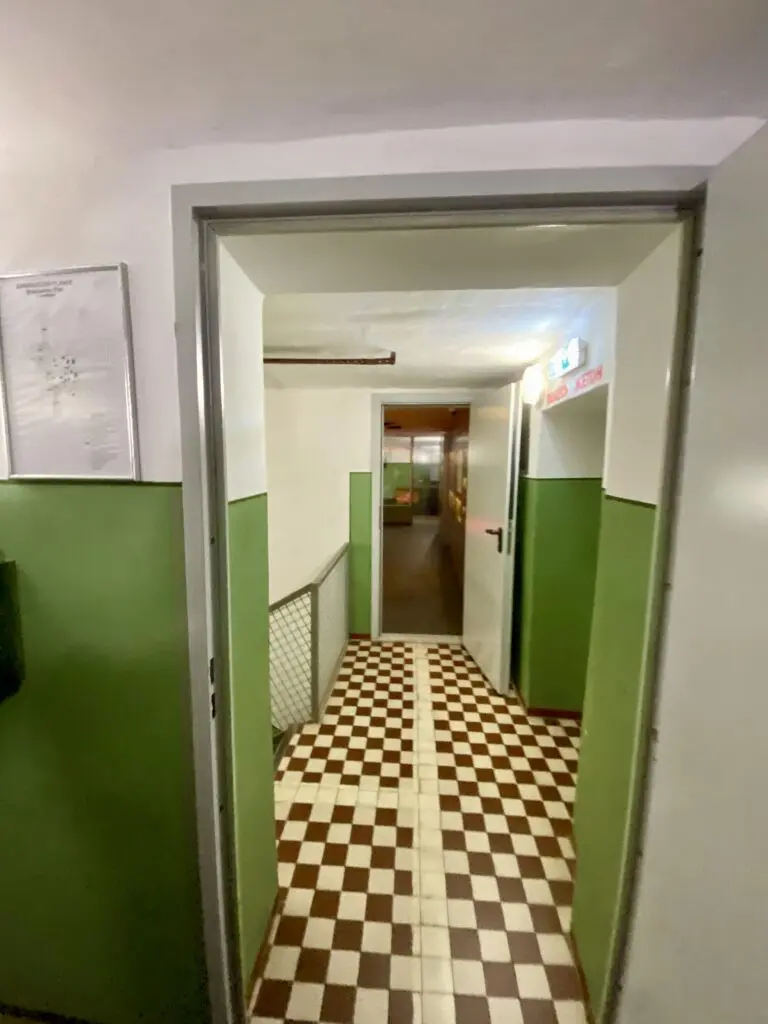
One room was a “resting” room, where the critical workers hung out between shifts. The long narrow room had a large overstuffed leather bench seating area running down the middle, and 1950/60s Russian propaganda posters on the walls. While the nuclear workers were “resting”, the KGB brainwashed them using the posters and TV screen to make their points.
My favorite poster featured a Russian fella carrying armloads of groceries, while stating (literally) “Thanks to you, your family’s have meat and bread. They even have toilet paper.” They called this “indoctrination”.
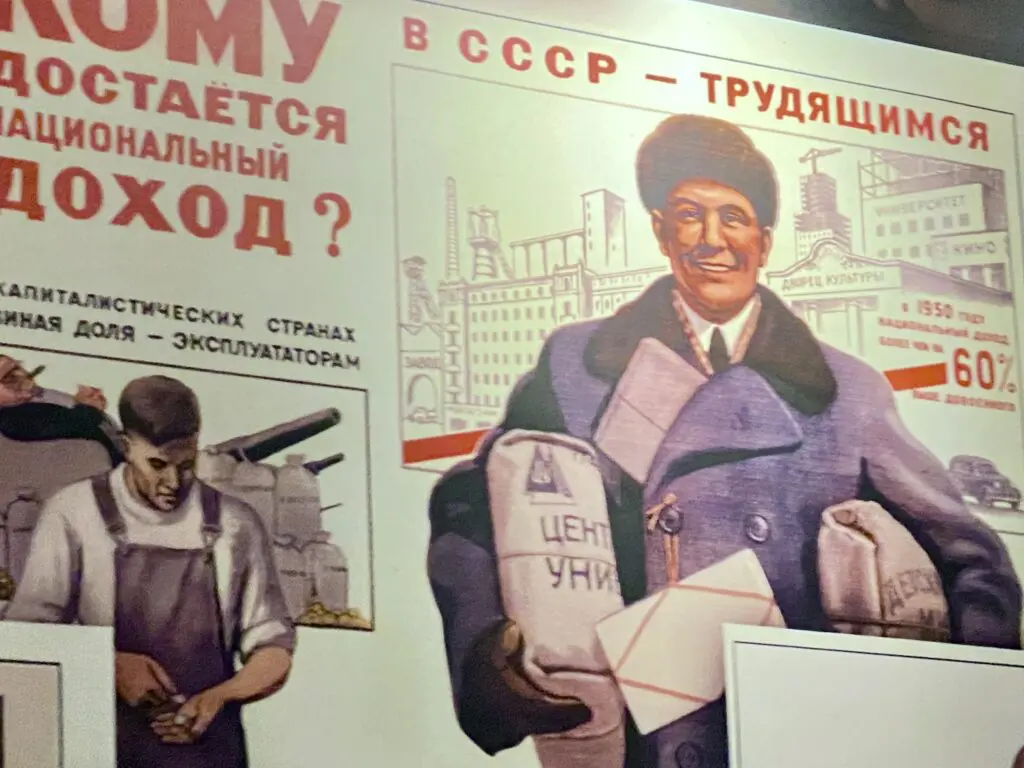
Although the country gained independence from Russia in 1990, they did not abandon the nuclear Klaipeda Nuclear Missile Site until 1992. All that they took with them was the rocket and nuclear materials.
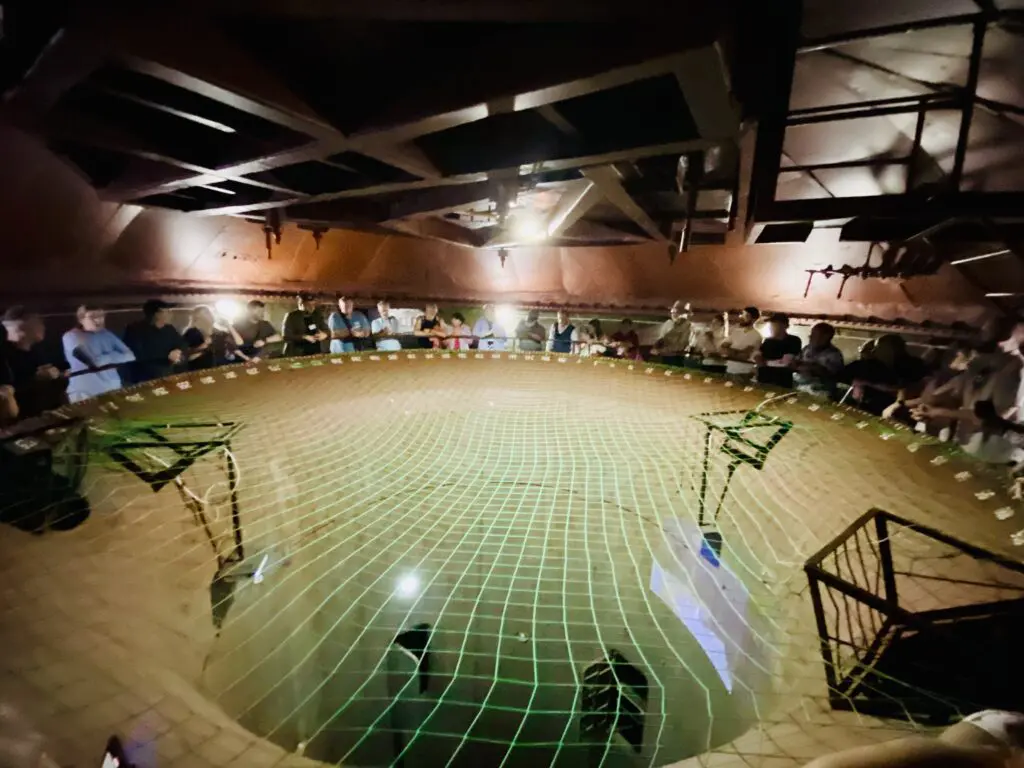
The locals eventually broke into the facility, and pretty much stoled everything, except a massive generator that was too big to be removed. So big in fact, that they built the facility around it. So rather than stealing it, they partially blew it up (which you can see in the photo).

After the tour, we enjoyed a typical Lithuanian meal at a restaurant before returning to the ship. The food was so-so, except I have to admit, the borscht was awesome. I never would have guessed how much I would enjoy cold beet soup, but it was outstanding. Sweetand creamy. It had super thin sliced beetsand sweet onions, with a sweet sour cream-like topping.

Along the way, we heard many stories of how life was when the Russians ran the country. Never enough food. Daily food lines. Awful living conditions back then.
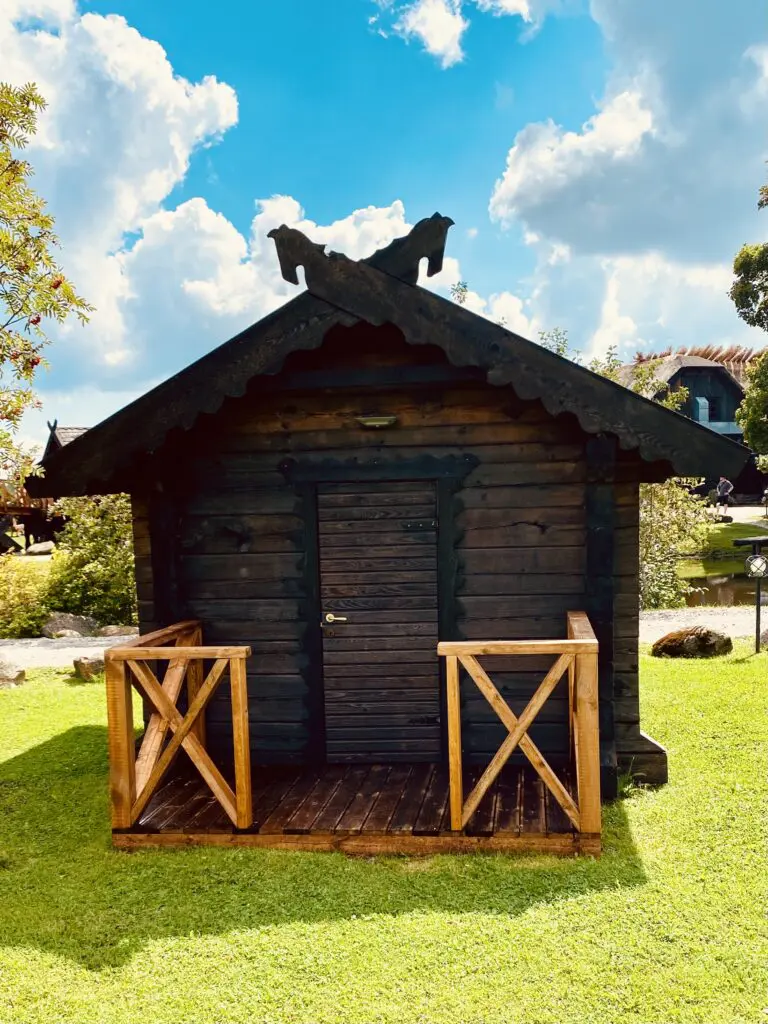
What a nice bunch of folks. I’m a big fan.
Next up, back to Denmark, and you know the drill. Yup, it’s another story and all that Jazz. Thanks for visiting.
– Mike
“Nothing is so necessary for a young man as the company of intelligent women.” – Leo Tolstoy, War and Peace

Recent Comments